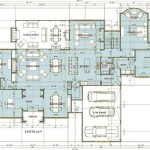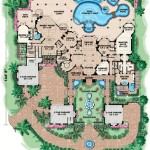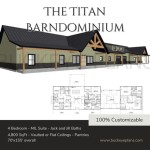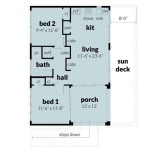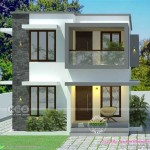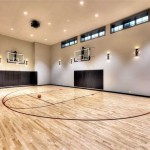Tiny House Designs and Floor Plans
The tiny house movement has gained popularity in recent years as a way to live a more sustainable, affordable, and minimalist lifestyle. These small homes, typically ranging from 100 to 400 square feet, offer a surprising amount of space and functionality, making them a great option for individuals, couples, and even small families.
When designing a tiny house, careful planning is crucial to maximize the use of space and create a comfortable living environment. One of the key aspects of tiny house design is the floor plan. A well-designed floor plan can make a tiny house feel spacious and inviting, while a poorly designed one can make it feel cramped and uncomfortable.
Key Considerations for Tiny House Floor Plans
There are several key considerations to keep in mind when designing a tiny house floor plan:
- Space Planning: The first step is to determine how you will use the space. Divide the floor plan into different zones for sleeping, cooking, dining, and living. Consider how you will move through the space and how you will use each area.
- Storage: Storage is essential in tiny houses. Plan for ample storage solutions, such as built-in shelves, drawers, and cabinets. Utilize vertical space and consider using multi-purpose furniture to maximize storage. li>Natural Light: Natural light can make a tiny house feel more spacious and inviting. Include large windows or skylights in your design to take advantage of natural light. Position the windows strategically to maximize sunlight in different areas of the house.
- Multipurpose Spaces: Multipurpose spaces can help you save space and create more flexibility. For example, a living room can double as a guest room, or a dining table can be used as a desk.
- Layout: The layout of your floor plan is important for both functionality and aesthetics. Consider the flow of traffic and how the different areas of the house connect. Avoid creating dead spaces or awkward transitions.
Different Types of Tiny House Floor Plans
There are many different types of tiny house floor plans to choose from, depending on your specific needs and preferences. Some common types include:
- Loft Design: Loft designs have a sleeping loft above the main living area. This creates a separate sleeping space while maximizing the use of floor space downstairs.
- Flat Design: Flat designs have all the living areas on one level. This can be a good option for individuals with mobility issues or those who prefer a more open and spacious layout.
- Cabin Design: Cabin designs are typically cozy and charming, with a traditional cabin-like feel. They often feature a peaked roof, a porch, and a wood-burning stove.
- Gooseneck Design: Gooseneck designs have a curved roofline that allows for a loft sleeping area without taking up too much space. This can be a good option for creating a more spacious living area downstairs.
- Park Model Design: Park model designs are designed to be placed on a permanent foundation in a mobile home park. They typically have a more traditional house-like appearance and offer more space than other types of tiny houses.
Conclusion
Designing a tiny house floor plan can be a challenging yet rewarding task. By carefully considering your needs and preferences, and following the principles of good design, you can create a tiny house that is both functional and beautiful. Whether you choose a loft design, flat design, cabin design, gooseneck design, or park model design, there are endless possibilities for creating the perfect tiny house for you and your lifestyle.

Tiny House Floor Plans With Lower Level Beds Tinyhousedesign

Tiny House Plan Examples

Floor Plan For Tiny House

Tiny House Floor Plans Design Your

Family Tiny House Design Floor Plans Layout

Tiny House Floor Plans 32 Home On Wheels Design

27 Adorable Free Tiny House Floor Plans Craft Mart

Tiny House Floor Plans With Lower Level Beds Tinyhousedesign

10 X 20 Tiny Home Designs Floorplans Costs And Inspiration The Life
:max_bytes(150000):strip_icc()/wanderinstarfarms_103561926_275439266841919_804825427512003420_n-f6f92ef6e3e642acb214c24736ceb114.jpg?strip=all)
11 Beautifully Designed Tiny Homes

